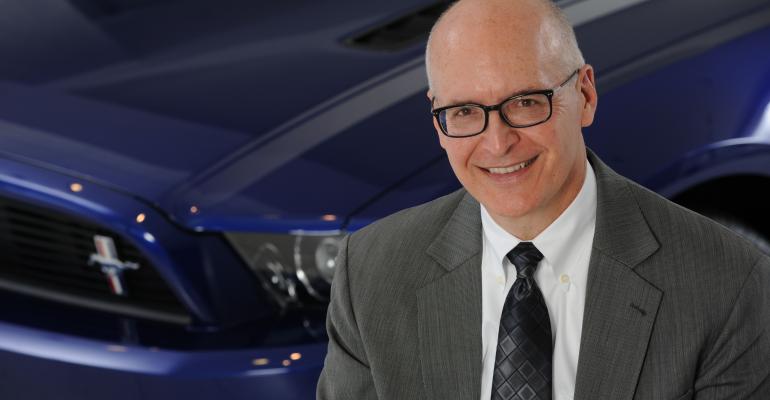There’s probably a long list of reasons why Ford would be reluctant to merge with rival Fiat Chrysler Automobiles, but Bob Shanks, the Dearborn-based automaker’s chief financial officer sheds some light on a key one in a backgrounder with analysts last Friday: math.
FCA CEO Sergio Marchionne has been on the stump in recent weeks, calling for industry consolidation as a way to combat the high costs of product development and production in a world where regulatory and market demands are requiring automakers to offer a smorgasbord of powertrain technology and vehicle configurations.
In addition to promoting the idea with financial analysts and media, Marchionne has been reaching out to key executives inside and outside the auto industry, including General Motors CEO Mary Barra, who The New York Times says rebuffed a pitch for a potential merger made by email.
Unlike GM, Ford has not been contacted directly by FCA, Shanks says. But considering his off-the-cuff analysis of the pros and cons of such a megamerger, Marchionne need not waste the effort.
“We’re not a suitor for FCA,” Shanks says flatly, reiterating earlier sentiments of Ford CEO Mark Fields and Chairman Bill Ford. “We’re very much focused on our own plan…which is a merger of Ford (global operations) itself. So we don’t see that type of opportunity as one that applies to us.”
Here’s why. Ford brass believe FCA’s premise that the bigger the company the better the efficiency goes only so far, and ultimately the cost-benefit equation that may look good on paper just doesn’t add up in the real world.
“You write down in a report that it’s going to generate billions of dollars in efficiency, (but) it just doesn’t work that way,” Shanks says.
When it comes to scale, suppliers play as big or even bigger roles than the automakers themselves, he says. Even with global architectures that can underpin several million vehicles annually, economies-of-scale possibilities typically are capped by such constraints as local market demands, regulatory requirements and logistics issues.
“When you get into the details of where scale occurs, most often it’s at the level of natural scale for a given component,” the Ford executive says. “It could be 50,000 units, it could be 200,000 units. And it’s tied into your local supply base as well as your own manufacturing capacity. It’s not at the 6 (million-) or 7 million-unit scale.”
Merging with another automaker could save on some engineering costs, Shanks admits. “But in terms of the components and manufacturing scale, it’s really down to the supply base and the component.”
To that end, Ford is working to ensure its suppliers leverage their investments and maximize their manufacturing footprints whenever possible by specifying standard designs and materials, not requiring parts unique to Ford.
“That’s very much our way of thinking now,” he says. “And it is something we still believe we have a lot of opportunity to pursue. That’s where our focus is in terms of the scale opportunities we see ahead of us.”
Shanks says Ford definitely is looking to pick its spots on capital spending, with constant discussions revolving around what technology is considered core, what should be farmed out to suppliers and where teaming up with another automaker makes the most sense.
“Going forward, you’ll see us more open and challenging past positions around things we feel we have to do versus things we can do either through others or with others,” he says, citing tie-ups with GM on 9- and 10-speed transmissions and with PSA Peugeot Citroen on diesel engines as examples of the collaboration blueprint Ford will continue to follow.
“I think you’ll see those types of models applied much more broadly.”
But a full-on merger with another automaker? Not likely.
“We would talk about anything,” Shanks says. “We have a lot of experience with mergers – the relationship with Mazda, the PAG brands (former ownership of Jaguar, Aston Martin and Volvo). We’re not babes in the woods.
“(But) based on our experience, that doesn’t seem to be where we’d want to go. We want to have a more forward-looking perspective in terms of what’s happening to the industry…and make investments (in new directions), and this seems like it would be doubling down on the past.”





